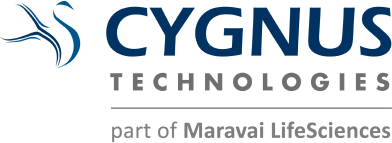Antibody Affinity Extraction (AAE™)
HCP coverage analysis with superior predictive value
Antibody Affinity Extraction (AAE™), a type of immunoaffinity chromatography, is a novel method designed to assess the coverage of a polyclonal antibody to host cell proteins (HCPs) in a given process as well as HCP antibody reactivity to those HCPs that may potentially co-purify with a drug substance. This method was devised by Cygnus Technologies in 2013 to overcome the technical challenges and limitations of an older, traditional orthogonal method such as 2D Western blot (2D WB) and the more recent 2D-DIBE method of assessing the coverage of a polyclonal antibody to total host cell protein.
Supporting Publications
Antibody Affinity Extraction (AAE™) Empowers HCP Identification by Mass Spectrometry
For lack of better methods, 2D WB has been traditionally performed from large format two-dimensional gel electrophoresis (2D PAGE) gels with protein transfer to membranes for 2D WB comparison to silver stain. Due to the sensitivity limitations of 2D WB, coverage can only be estimated on upstream, harvest samples where the concentration of most HCPs are still within the sensitivity limitations of various staining methods. These inherent sensitivity limitations of 2D WB include:
- Loading capacity;
- Destruction of native epitopes by harsh sample treatment;
- Failure to transfer some HCPs out of the gel;
- HCPs bound to the membrane such that antibody binding is sterically inhibited;
- Difficulties in aligning the dissimilar PAGE gel to a WB membrane images; and
- Poor specificity.
All of these limitations result in an underestimation of true antibody coverage to upstream HCPs. More importantly, 2D WB does not predict how that antibody will quantitatively react to the most important HCPs which are those that co-purify with the drug substance. Because of the recognized sensitivity limitations of 2D WB, the conventional acceptance criteria are that >50% of the total HCP should be reactive and that the antibody must recognize HCP in all quadrants of a 2D PAGE gel.
To overcome the analytical deficiencies of 2D WB, Cygnus developed Antibody Affinity Extraction with the goals of improving the sensitivity and coverage assessment of the total HCP mixture present in cell culture harvest stream, and to allow for detection and demonstration of reactivity to downstream, process-specific HCPs which are the most important HCPs. Unlike 2D PAGE fractionation followed by 2D WB where sensitivity is limited by loading capacity, AAE sensitivity can be over 100 times higher due to the ability to extract and concentrate large sample volumes. AAE is more predictive of how the anti-HCP Ab will perform in HCP ELISA and provides sufficient sensitivity to evaluate individual HCPs that persist through purification process. The most recently revised USP Chapter 1132 describes immunoaffinity chromatography, or AAE, as one of the methods to determine antibody coverage.
Advantages of performing AAE over 2D western blot:
Antibody Coverage Analysis by AAE
To perform AAE, the polyclonal antibody is covalently immobilized on a chromatography support. The column is then conditioned to prevent significant leaching of the antibody and to greatly minimize any non-specific binding. The HCP sample in its native, undenatured state is passed over the column for binding and then eluted with acid. The HCP sample is again cycled over the column by binding and elution until no additional HCP is bound. All HCP elution fractions are pooled, buffer exchanged, and concentrated back to the original sample volume. The final sample is then separated by 2D SDS PAGE and analyzed by either a comparison to a silver stain of starting, unextracted sample or by Differential Gel Electrophoresis (DIGE) using Cy3 and Cy5 to label the extracted and starting, unextracted samples (Fig 1). The coverage is assessed by the number of HCPs in the AAE elution fraction (silver stain or Cy3 labeled) compared to those seen in the 2D PAGE of the starting antigen sample (silver stain or Cy5 labeled).

Antibody Coverage by AAE with 2D PAGE or MS Analysis

Reliable coverage from DS containing harvest material
AAE combined with mass spectrometry (AAE-MS™) is a powerful method to assess antibody coverage to HCPs in a given process. The advantage of AAE-MS approach is that in addition to % coverage, it identifies HCPs in the harvest material and HCPs reactive with the antibody and yields protein MW and pI information. Importantly, AAE-MS is the only method that can reliably assess HCP antibody coverage in those cases when null cell culture is not available for coverage analysis studies and the only available sample is a drug substance containing harvest material.
Virtual Two-Dimensional Gel of Harvest Sample: MW vs. pI
Antibody Reactivity to Downstream HCPs and HCP Identification by AAE-MS™
While coverage to the total HCP mixture present in a cell culture harvest stream by orthogonal methods has been traditionally requested by regulators, the most significant advantage of AAE is its ability to detect and demonstrate reactivity to individual, downstream HCPs. It is the HCPs that persist through a given purification process that are the most important with respect to patient safety, drug efficacy and stability.

HCP Identification in the DS by AAE with MS
The extraction and concentration of downstream HCPs by AAE also depletes most of the drug substance. Removal of drug substance greatly improves the ability to identify individual HCPs by 2D PAGE and Mass Spectrometry analysis, given that drug products often mask HCPs by a factor of 104-106. AAE-MS approach allows the detection and identification of HCP impurities to help optimize your downstream purification processes and identify any potential HCP impurities in your drug substance. In addition, AAE-MS represents a more objective and direct method to qualify the ELISA as fit for purpose of detecting those HCP that co-purify with your drug substance.

The DS was analyzed Pre- and Post-AAE by MS, and PPM quantification was calculated relative to the most abundant protein in each sample. For the pre-AAE sample, known problematic CHO HCPs were quantified relative to the DS. For the post-AAE sample, CHO HCPs were quantified relative to the most abundant protein, C-C motif chemokine 2.

